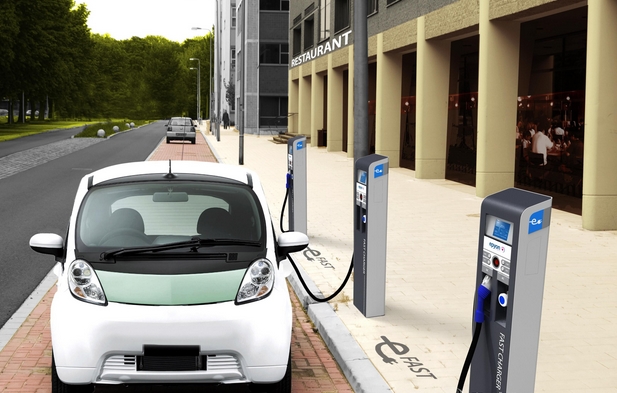
Source: Baidu
Subsidy fraud from five Chinese AEV makers in China
China started giving state aid to alternative energy vehicles (AEV) makers in 2009 to promote the development of green vehicles to help tackle air pollution. Subsidies totaled RMB33.44 billion as of the end of 2015.
Early in 2016, China’s Ministry of Finance (MOF) with other ministries and commissions launched probes into more than 90 major AEV firms. 401,000 alternative energy vehicles which already got the subsided funds or got approval for the funds application were in the probes. Meanwhile, the MOF had spot check on the running status of 133,000 sold alternative energy vehicles.
After a long time of inspection, in 8 Sep., 2016, MOF released a notification about special inspection on subsidies for alternative energy vehicle (AEV) promotion and application, publicly exposing subsidy fraud and typical cases of plotting subsidy of five AEV manufacturers, in which USD151.23 million (RMB1.0 billion) financial subsidies have been involved.
The five AEV manufacturers included Suzhou GEMSEA Coach Mannufacturing Co., Ltd. (GEMSEA), Ltd., King Long United Automotive Industry (Suzhou) Co. Ltd., Shenzhen Wuzhoulong Motors Co., Chery Wanda Guizhou Bus Co., Ltd. and Henan Shaolin Bus Co., Ltd.
According to the notification, some AEV firms had cheated the government by falsifying sales records. Typically, the following is how the AEV firms defrauded the government.
1. Vehicles have not reached the promotion standard or have not been manufactured at all, but have acquired subsidy by getting license plate against regulations.
2. Vehicles are qualified but have been sold to relevant enterprises but not end users, acquiring subsidy beforehand without meeting the subsidy requirements.
3. Vehicles are sold to the end users but are left unused after acquiring the subsidy, thus seriously wasting financial fund.
The companies will be fined and the funds recovered, the ministry said. They also will no longer receive state aid and the relevant models developed by them will be removed from the national directory of subsidized AEV products.
Adjustment on AEV subsidy policy
In order to crack down on an increasing number of fraudulent claims, the Chinese government would adjust on the subsidy policies for AEVs.
According to CCM’s research, the new subsidy policies on AEVs will be adjusted in various aspects on the basis of the previous 2016-2020 subsidy plan. For instance, the access standard (including vehicle energy consumption, driving range, power battery safety and enterprise integrity) will be raised, the subsidy amount will be decreased, and the money allocation cycle will be extended.
The section of alternative energy bus in which subsidy frauds are practiced severely are the very first to be cut down in subsidy amount. For a 6-8 metres vehicle type, the subsidy amount for each one will be decreased from the previous USD17,968–37,434 (RMB120,000–250,000) to USD10,781–22,460 (RMB72,000–150,000). For 8-10 metres vehicle type, the subsidy amount for each one will be decreased from USD29,947–59,895 (RMB200,000–400,000) to USD22,460–44,921 (RMB150,000–300,000).
In addition, the subsidy of alternative energy passenger car and fuel-cell vehicle will be remained, but the subsidy upper limit of alternative energy special vehicle and alternative energy truck will be increased.
Changes of subsidy policy to help increase demand of ternary power Li-ion battery
The adjustments in the policy bring the changes in the AEV market.
With the maintained subsidies for alternative energy passenger car and fuel-cell vehicles and the increased upper limit of subsidy for alternative energy special vehicle and alternative energy truck, the productions of alternative energy passenger car, alternative energy special vehicle and
alternative energy truck are predicted to increase while that of alternative energy bus would fall.
That is to say, ternary power Li-ion battery, which is mainly used as power in alternative energy passenger car and alternative energy special vehicle, would explosively increase in its demand. It is predicted that the demand would increase to 10GWh in 2016 from the 4.4GWh in 2015.
Moreover, the electric logistics vehicle market (segment of the alternative energy special vehicle market) has become much favored by the industry so that quite a few manufactures have accelerated the layout of relevant vehicle types.
There are altogether 448 alternative energy vehicle types, including 190 types of electric special vehicles (logistics vehicle accounts for more than 50%) from the statistics collected in the declaration notification of the Announcement on Road Vehicle Manufacturers and Products (287th batch) issued by MIIT of PRC in August, 2016.
Considering the current situation, GF Securities Co., Ltd. also pointed out in its research report that electric delivery vehicle is expected to explode in its sales volume in the third and fourth quarters of 2016 with an estimated annual sales volume of over 100,000 vehicles.
If you are looking for more information about alternative energy vehicles in China, you could have a look at CCM’s China Li-Ion Battery News or sign in to CCM’s Online Platform to get more free information on alternative energy vehicles.
About CCM:
CCM is the leading market intelligence provider for China’s agriculture, chemicals, food & ingredients and life science markets. Founded in 2001, CCM offers a range of data and content solutions, from price and trade data to industry newsletters and customized market research reports. Our clients include Monsanto, DuPont, Shell, Bayer, and Syngenta. CCM is a brand of Kcomber Inc.
For more information about CCM, please visit www.cnchemicals.com or get in touch with us directly by emailing econtact@cnchemicals.com or calling +86-20-37616606.
-
Average:
-
Reads(1710)
-
Permalink


 Back to Cnchemicals.com
Back to Cnchemicals.com 